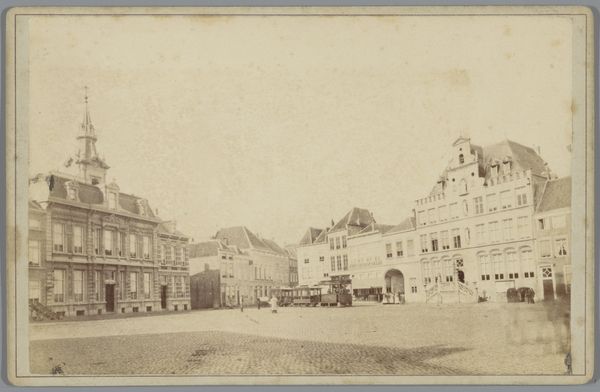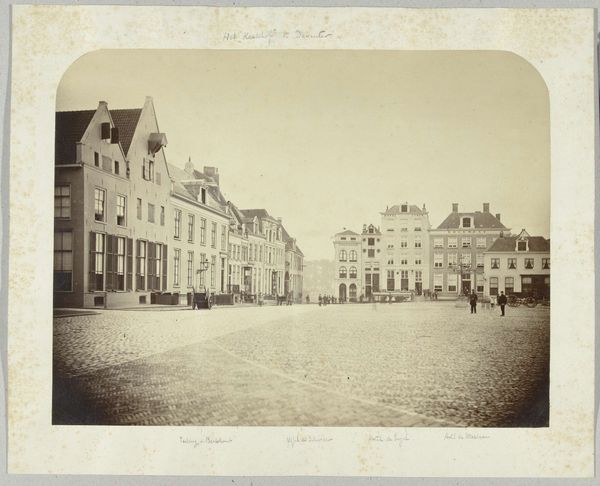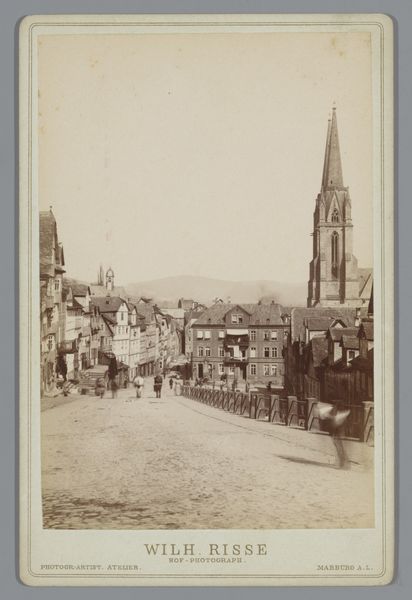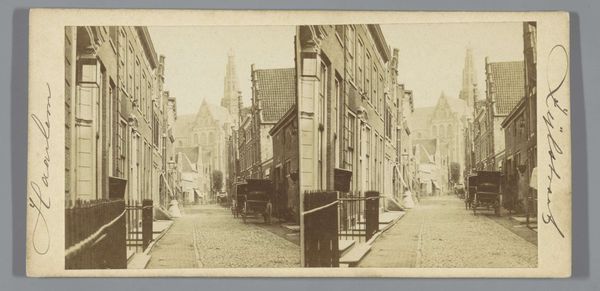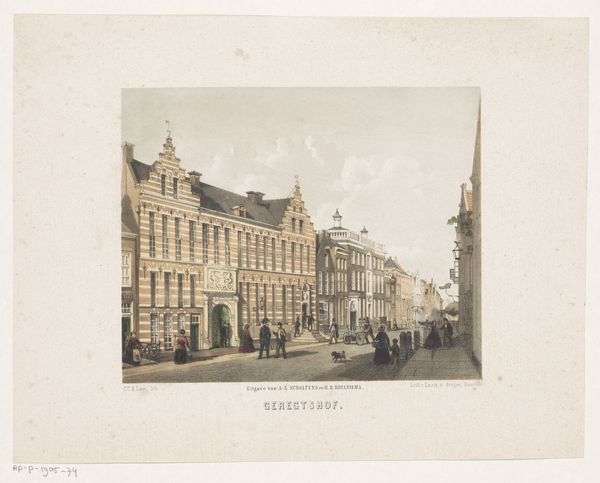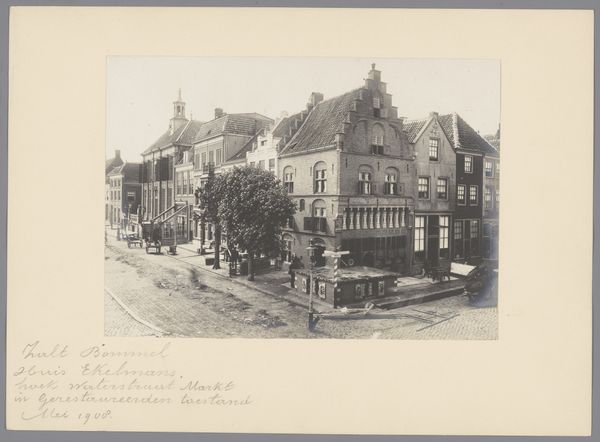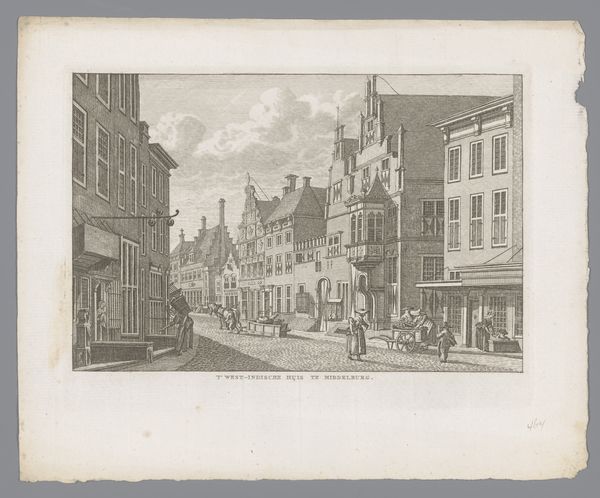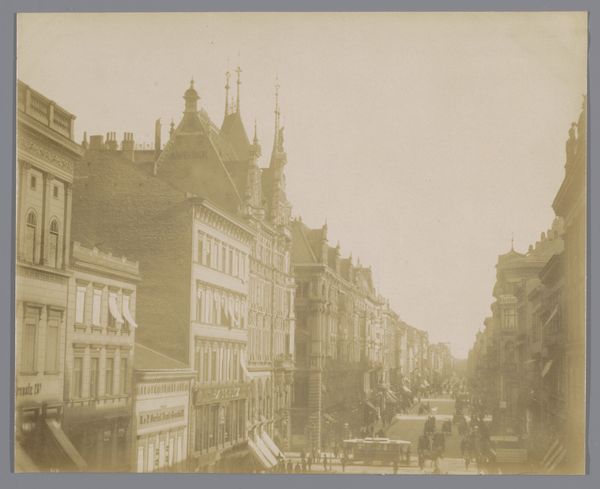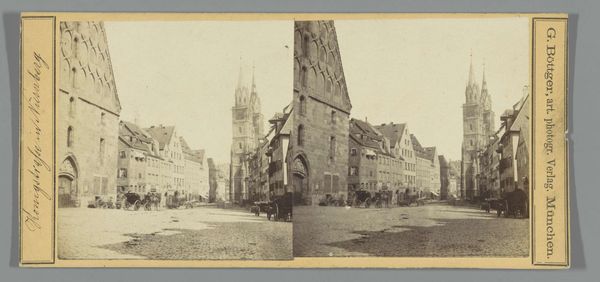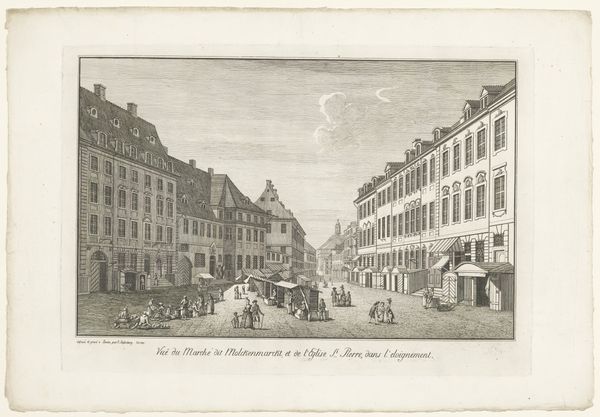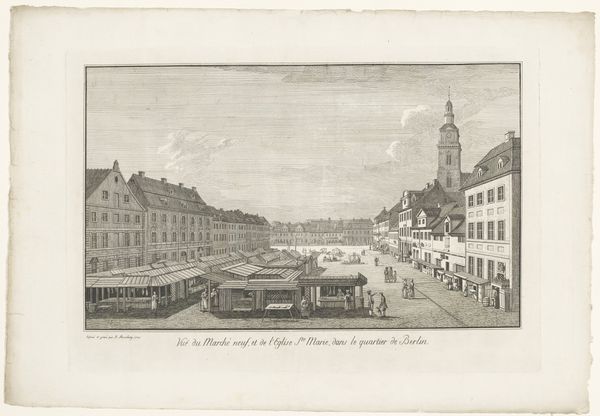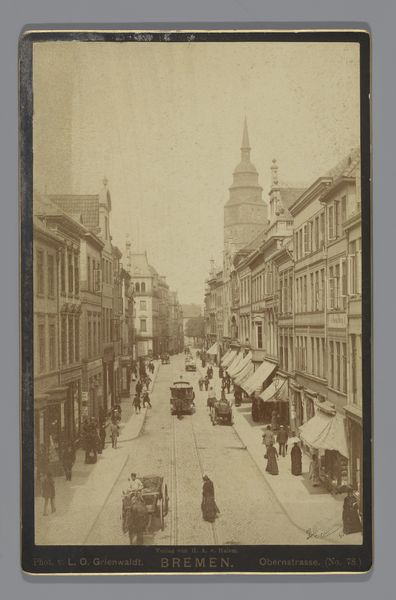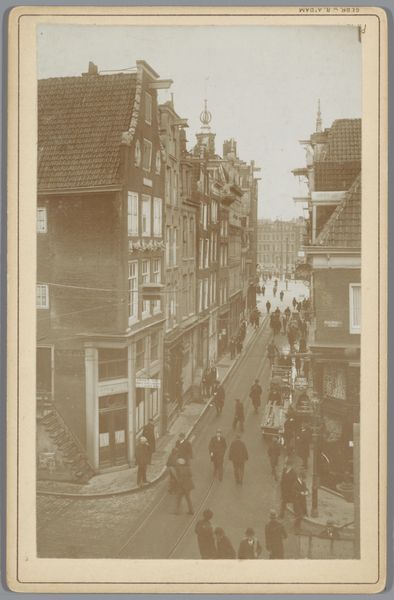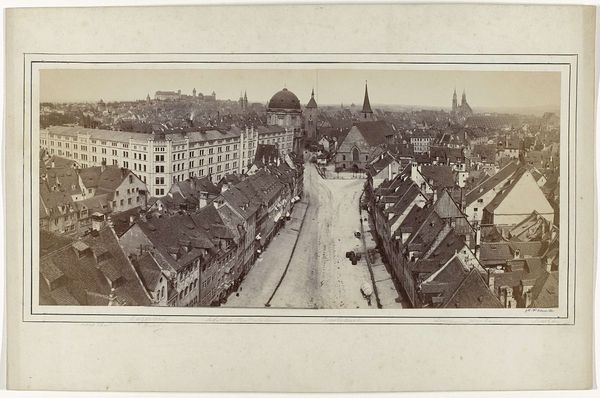
photography, albumen-print
#
photography
#
cityscape
#
albumen-print
#
realism
Dimensions: height 108 mm, width 164 mm
Copyright: Rijks Museum: Open Domain
Curator: This albumen print, attributed to Théodor Weijnen and dated between 1880 and 1900, offers us "A View of the Boschstraat with the Sint-Matthiaskerk in Maastricht." It presents a long perspective down a street toward a church. Editor: The sepia tones create a tranquil atmosphere, almost dreamlike. The composition, with its strong central perspective, guides the eye directly to that church. I'm interested in how light plays across the buildings, creating this sense of depth. Curator: Yes, let's consider albumen prints for a moment. The process involves coating paper with egg white and silver salts, resulting in a smooth surface. That smoothness really emphasizes the details here—we can almost read the shop signs. But, consider the context: photography was still a relatively novel technology at the time. Images like these democratized representation of the urban landscape, capturing daily life and work, albeit with certain limitations and biases from the labor and economy required for photograph development and distribution. Editor: I see your point, but formally, look at how the photographer balances the solid architecture on the left with the lighter space to the right. It's quite skillful use of the tonal range—from the almost black window frames to the palest sky—to create a structured image. Do you think the length of exposure has affected it much? Curator: Possibly; a longer exposure was needed to accommodate less sensitive plates. The relative stillness gives us insights to social activity, or the lack of it on that day, which likely hints at slower economic patterns. Editor: I admit I'm taken by how the architectural detail fades into the background; and also I find that slightly blurry church tower dominates the view—the light gives a celestial effect to the photograph! Curator: Absolutely. These photographic technologies of the period helped to create the documentary power which influences us even now. The means of creating art, from processing chemistry to the physical movements involved with photographic equipment influenced that artwork aesthetically and its cultural implications in terms of capital. Editor: True; a potent blend of light and shadow has clearly documented a compelling aesthetic that goes beyond any social function! Curator: Ultimately, exploring it through social lenses certainly enhanced its depth of the art object for me. Editor: For me too! I understand and appreciate even more how skillfully he’s employed line and light for this intriguing photograph!
Comments
No comments
Be the first to comment and join the conversation on the ultimate creative platform.
